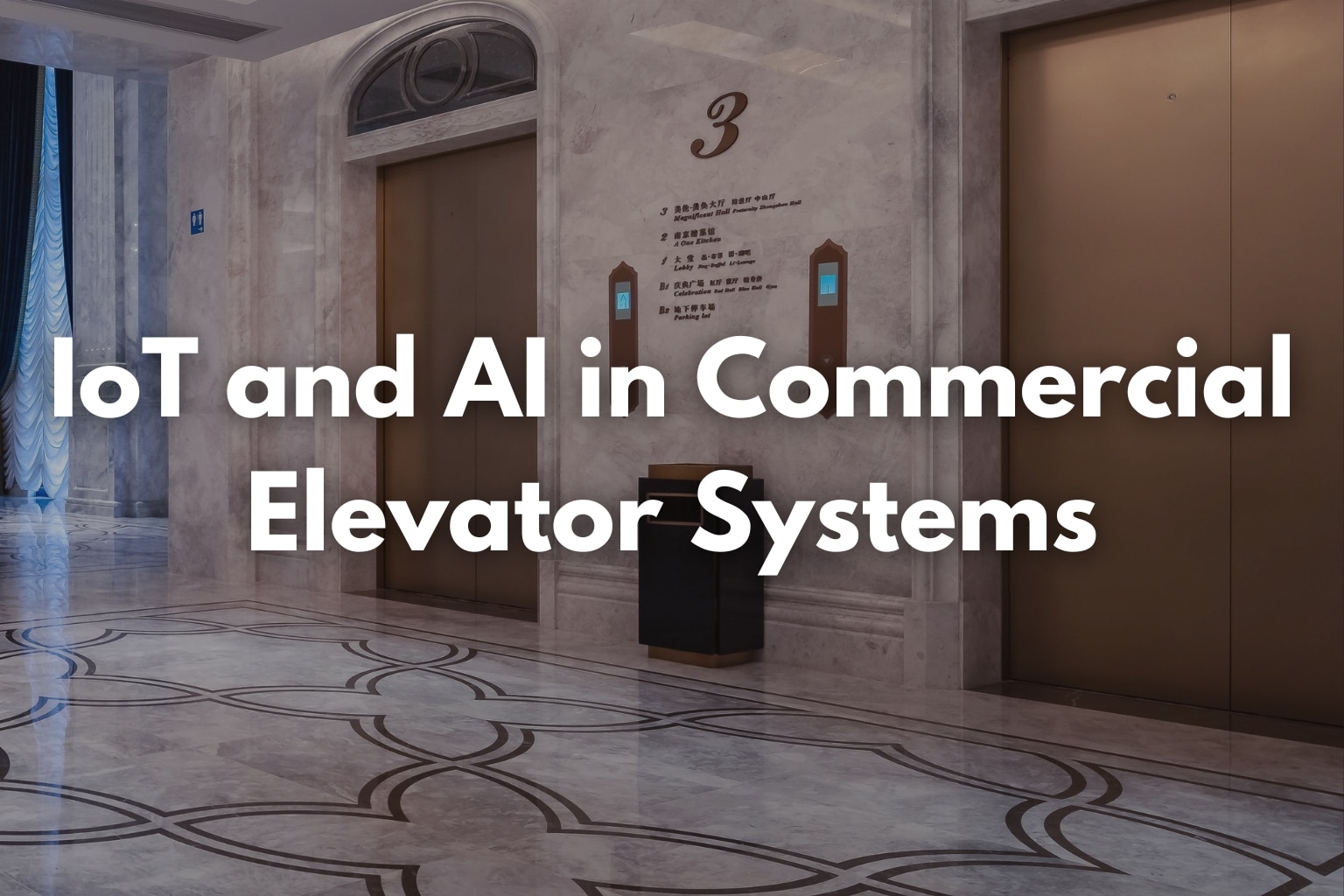The Internet of Things (IoT) is transforming many industries, including elevators and building infrastructure. IoT-enabled “smart elevators” are becoming more common, providing benefits like predictive maintenance, energy savings, and an improved user experience. In this post, we’ll explore how IoT and artificial intelligence (AI) are revolutionizing elevator systems and the elevator industry.
IoT Devices and Connectivity
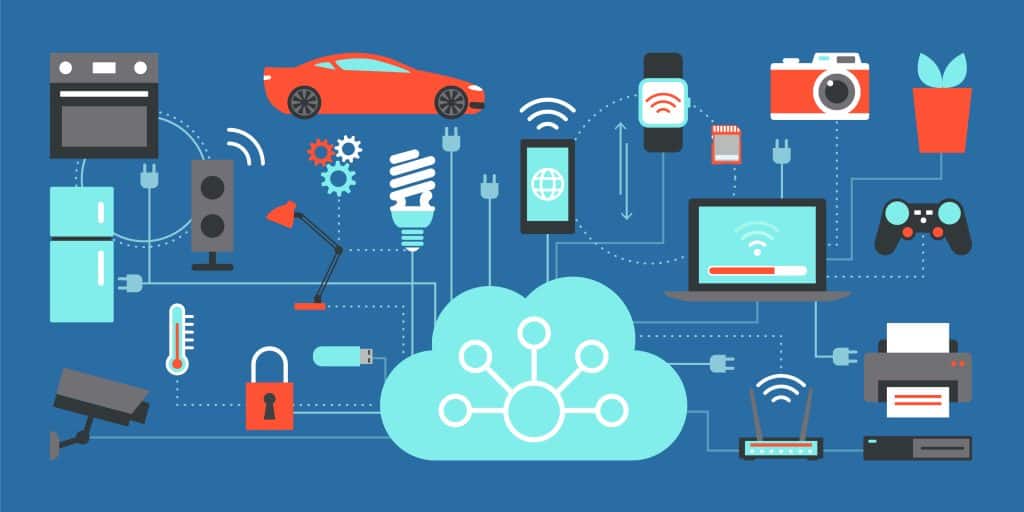
In the heart of modern skyscrapers and office buildings, a silent revolution is taking place. It’s not just the elevators that are going up and down; there’s an upward trend in smart technology integration too. IoT (Internet of Things) devices are at the forefront of this change, transforming traditional elevators into highly intelligent transportation systems.
These aren’t your grandparents’ elevators; they’re smarter, safer, and more efficient, thanks to the power of IoT sensors and connectivity, maintained by your trusted elevator service company.
The Role of IoT Devices
Think about going into an elevator, and it already knows which floor you want to go to before you push any buttons. This isn’t some kind of trick—it’s because of IoT technology. IoT stands for Internet of Things, and it refers to small computers in the elevator that work like the brain’s nerve cells.
They collect information about how the elevator is working, how often it’s used, and if all the parts are in good shape. This information is very important because it helps people take care of the elevator in new and better ways.
Elevators with IoT are like smart robots; they learn and remember. Just like a friend who knows your favorite snack, these elevators remember your favorite floor. They use tiny computers to watch everything that happens inside them. These tiny computers check if the elevator is running smoothly or if something is wrong.
They even notice how busy the elevator is at different times. This helps people who look after elevators to fix them before they even break down. It’s like having a smart helper who makes sure the elevator is always ready for you.
Connectivity and Network Architecture
How does all the information from these smart elevators get around? It moves through a carefully set up system that’s like a big spiderweb. This system is made up of wireless gadgets that talk to each other and to a bigger internet cloud without any wires.
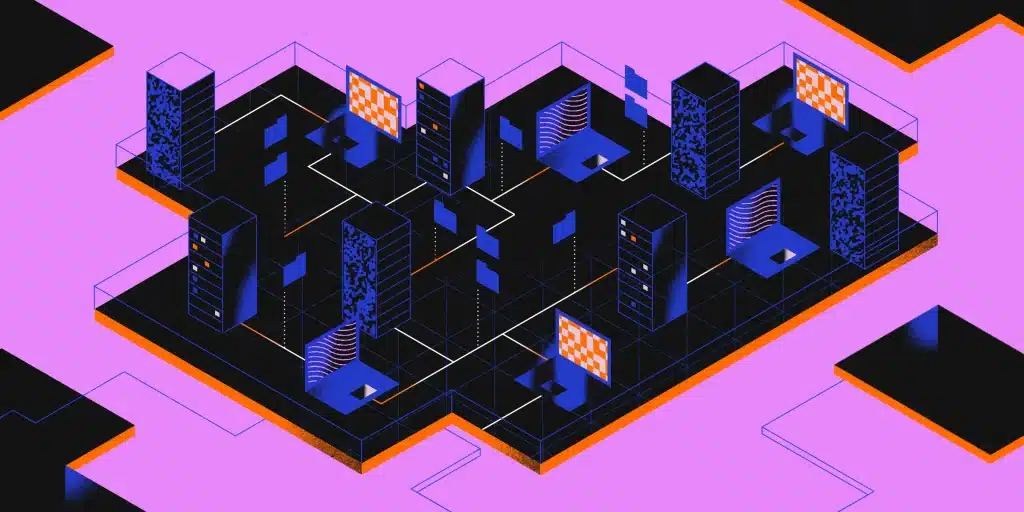
Imagine it like a big music show where every little part works together perfectly. Each little device and sensor has its job, making sure that all the information goes where it needs to go safely and quickly. This helps make sure that everyone using the elevators has a good experience.
Let’s think about how these smart elevators are like your smartphone. Just like how your phone sends and receives messages, elevators send information about what they’re doing and how they’re feeling. They use special devices that don’t need wires to talk to each other. This system is really well planned, like a puzzle where every piece fits just right.
These devices send their messages through the air to a place on the internet, which is a bit like a cloud in the sky where all the data is kept. It’s important that these messages don’t get mixed up or lost, so they’re sent in a very safe way. Because of this smart system, when you use the elevator, it knows how to take you to your floor in the best way possible, making your ride smooth and pleasant.
IoT Device Management and Data Security
Keeping an eye on these smart devices is very important. When lots of devices are connected, it’s essential to make sure the data is protected. People who make and manage elevators know this is a big deal. They use strong safety rules to make sure all the data stays private and secure. The data collected is very valuable because it helps make better elevators for the future.
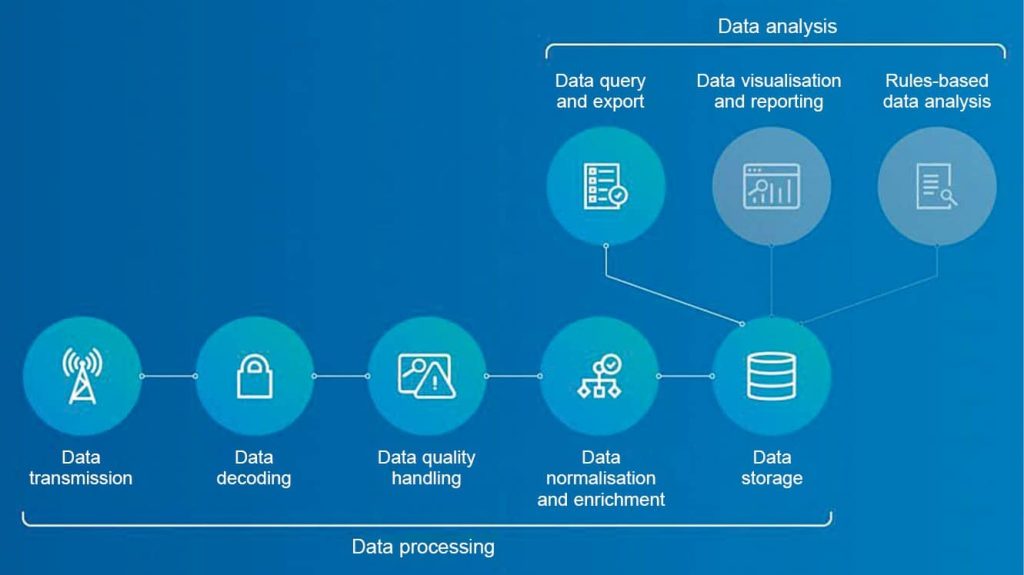
Smart elevators are like little computers that can talk to each other. They are part of what we call the Internet of Things (IoT). This means they can send information about how they are working and what they need. But, just like any computer that uses the internet, they need to be safe so no one can see or steal the information they share.
The people who work with elevators are always busy making sure everything stays safe. They have a set of rules they follow to protect all the information that the smart elevators collect. This is very important because the information is used to make elevators even better. It tells them what they need to fix before it breaks and how to make your ride smoother and safer.
In short, smart elevators are not just about moving up and down. They are about making sure you have a safe and comfortable trip, every time you use them.
AI Algorithms and Learning
Enhancing Elevator Functionality with AI
Artificial intelligence, or AI, is a big deal for elevators. It’s not just a trendy term—it really changes things! AI is like the smart part of the elevator’s brain. It looks at all the information gathered by the Internet-connected devices and uses that to make the elevators work better.
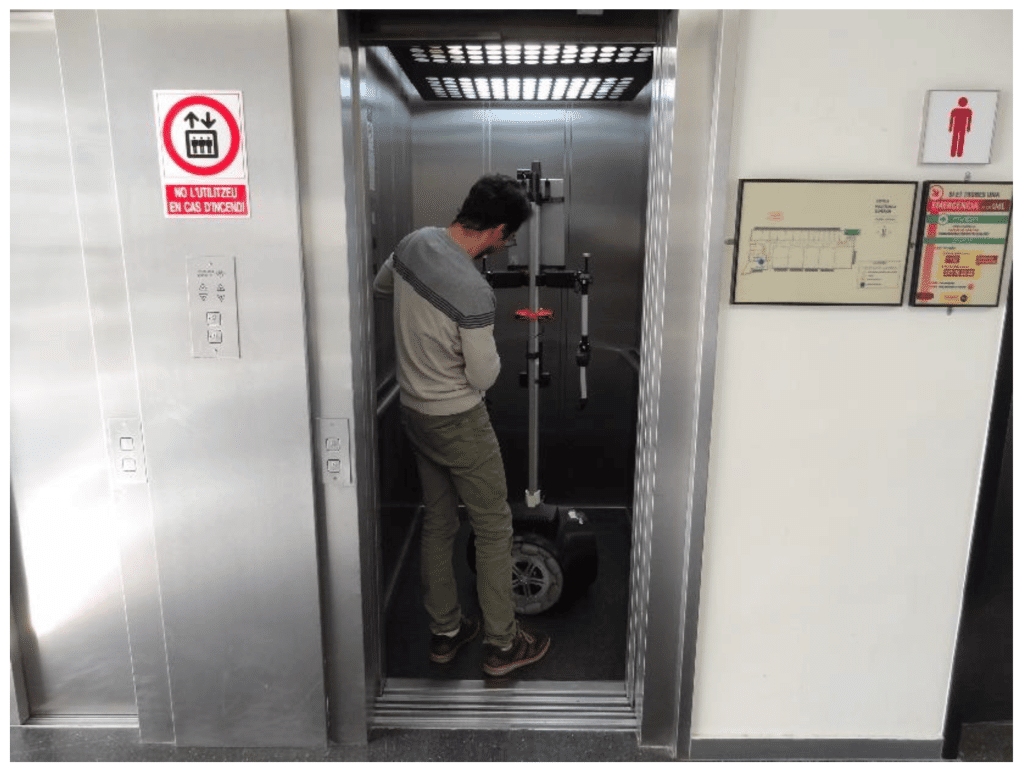
AI in elevators is super important because it helps the elevators to know things before they happen. For example, AI helps the elevator to figure out if it might stop working soon, so people can fix it before there’s a problem. This is really smart because it means less waiting for repairs and happier people using the elevators. Plus, AI helps elevators to move in a way that saves energy, which is good for our planet. So, AI doesn’t just make elevators smart; it makes them friendly and thoughtful too!
Machine Learning and Pattern Recognition
Imagine an elevator that knows when it might stop working and can tell us to fix it before any problem happens. This is called predictive maintenance, and it uses a special kind of computer program called machine learning.
These programs look at all the information about how the elevator works over time. They can spot any unusual signs that might mean the elevator needs attention soon. Machine learning is like teaching a computer to recognize patterns the way we learn to spot different shapes.
In elevators, this means the computer can notice when things are starting to go wrong, just like you might notice if your favorite toy starts making a strange noise. This type of AI technology can help identify maintenance needs and optimize energy use, even for affordable home elevators.
.It learns what’s normal and what’s not by looking at tons of data from the elevator. When it spots something that’s not normal, it can tell the repair people that the elevator needs help. This smart system helps keep the elevator running smoothly without unexpected breaks for repairs.
Adaptive Systems and System Optimization
Today’s elevators do much more than move people up and down. They’re becoming smart helpers in buildings, adjusting to how many people are using them and how the building uses energy. This smart adjusting doesn’t just make the elevators better; it also helps buildings use less power and gives people a better ride.
Smart elevators are like having a clever friend who knows just when you want to go up or down. They work with other smart things in a building to make everything run smoothly. This means that buildings can be more careful with energy, and everyone can get where they’re going more easily. These elevators are part of a new wave of technology that is changing our buildings for the better.
Real-Time Data and Network Infrastructure
Think of smart elevators like living things that are always learning. Every second, they get lots of important information that helps them get better and better. This information travels through a special path called the network infrastructure.
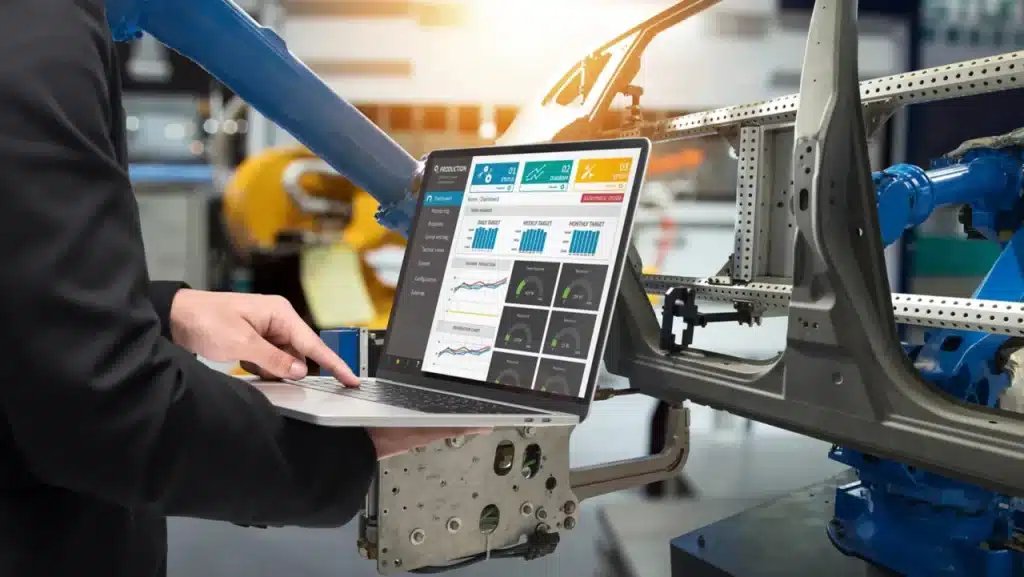
It’s not just random facts; it’s very important because it helps the elevator fix any problems quickly, sometimes even before people notice something is wrong. This is what makes smart elevators so advanced—they don’t wait for problems to happen, they try to stop them before they start.
Smart elevators are always connected, kind of like how your smartphone gets messages. They use their connection to get new information all the time, which helps them to work really well. This means they can handle problems right when they happen, without waiting.
Imagine an elevator that knows there’s going to be a busy time, like when everyone is going to work or coming home, and it gets ready for that all by itself. That’s what these elevators do. They are always ready and working at their best because they keep getting updates from this network, just like your phone gets updates to make it work better.
Wireless IoT Devices and IoT Communication
Think of wireless IoT devices in elevators as if they were bees in a hive, sending messages to each other quickly and clearly. They don’t send these messages randomly; there’s a clear plan and rules they follow to keep everything safe. This means that the information sent around – like how many times the elevator has been used or if the doors are working right – is always spot-on and shared fast. This helps the elevator to stay in good shape.
These wireless IoT devices are like little helpers that keep the elevator ‘talking’ to the building. When someone uses the elevator, these devices make a note of it, kind of like a diary entry. This helps the people who look after the elevators to understand what’s happening without having to be there all the time. It’s a bit like having smartwatches for the elevator, always checking its health and making sure it’s fit and fine.
AI System Learning and Algorithmic Efficiency
AI system learning is really clever. It looks at a lot of information and figures out what’s important. This isn’t just about using big words; it’s how these systems get better at noticing patterns and making good choices that make the elevators work better. The AI doesn’t stay the same; it gets smarter over time. It gets really good at guessing what the elevator will need next and taking care of it.
AI makes elevators smart by teaching them. It’s like when you learn something new and get better at it. The AI teaches elevators to understand what’s happening now and what might happen later. This means elevators can start to fix a problem before it even happens! It’s like having a crystal ball that helps the elevator avoid future troubles, which is great for everyone.
The IoT Elevator Market and Its Impact on Business
The market for IoT elevators is growing quickly because more buildings want to be smarter and more connected. This is a big deal for companies. They’re not just putting in new elevators; they’re also upgrading old ones. They make them smart so they can provide better experiences for the people using them and make it easier to take care of the elevators.
Imagine elevators in buildings getting smarter, just like phones do. Businesses are excited because they can make their buildings work better with these smart elevators. Old elevators are being changed to have new technology inside them. This means they can do more than move people up and down. They can tell when they need fixing or help people have a nicer ride. This is great for everyone, from the people who ride the elevators to the people who own the buildings.
IoT Solutions in the Elevator Industry
New tech in elevators is changing the way we fix and look after them. Companies aren’t just fixing or putting in new elevators; they are also watching and taking care of them in a smart way using IoT.
This means elevators can work well without any trouble. The elevator business is moving from the old way of just fixing problems when they happen to a new way. This new way uses smart tech to guess problems before they happen and keep elevators working great.
Nowadays, elevators are getting smarter with a new technology called IoT. This lets companies keep an eye on elevators all the time to make sure they work right. With IoT, they can see problems coming before they happen and can fix them fast.
This means elevators are less likely to break down and can take people where they need to go without waiting too long. IoT makes elevators better because they can take care of themselves in many ways.
The Smart Elevator System and Building Monitoring
A smart elevator system is an important part of checking how a building works. It works together with other smart systems in the building to give a complete picture of how the building is used. This teamwork lets the building adjust to the people in it, making sure they have a safe, easy, and good experience.
Think of a smart elevator system like the building’s helper. It’s like having a clever system that watches over the building and knows how to make things better for people living or working there.
It’s connected to other smart things in the building, like lights and doors, to make sure everything runs smoothly. This means the elevators can help the building save energy and make sure people don’t have to wait too long for an elevator. It’s all about making life easier and more comfortable for everyone in the building.
User Experience and Customer Service
In the end, everything is about how the user feels and the help they get. Using IoT and AI in elevators is more than just making them high-tech. It’s a promise to the people who ride these elevators every day. It’s about making sure that when someone gets into an elevator, they’re in a place that’s safe, quick to react, and smartly made to be comfortable and easy to use.
When we make elevators with IoT and AI, we’re making friends that live in our buildings. These friendly elevators know what you need before you even ask. They’re always looking out for you, making sure your ride is smooth and quick. They’re like your personal helpers who remember your favorite floor and make sure everything is working just right. If you’re in a rush, they work faster, and if you want a quiet ride, they make it smooth. This smart care means you always have a good time in the elevator, feeling like someone is always there to make your ride better.
Conclusion:
In conclusion, IoT and AI are transforming commercial elevators. IoT devices like sensors allow elevators to collect real-time data. AI algorithms analyze this data to optimize functionality. Together, they enable predictive maintenance, energy savings, and an improved user experience.
Elevators are becoming smarter, safer, and more efficient. The elevator industry is rapidly adopting these technologies to upgrade infrastructure. Ultimately, IoT and AI are revolutionizing elevators, making them more intelligent, connected, and responsive. This modernizes the industry and benefits passengers and building owners alike.

